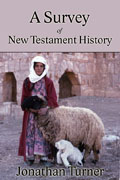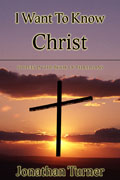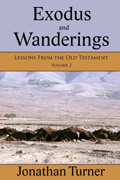Just before He died, Jesus taught His disciples an interactive parable. True, the Scriptures do not call it a parable. But Jesus took some very ordinary, day-to-day items and used them to illustrate some profound spiritual truths. True, Jesus did not give this teaching in the form of a story. But nevertheless it is a living story which is still playing out in our lives today.
“While they were eating, Jesus took bread, gave thanks and broke it, and gave it to his disciples, saying, “Take and eat; this is my body.” Then he took the cup, gave thanks and offered it to them, saying, “Drink from it, all of you. This is my blood of the covenant, which is poured out for many for the forgiveness of sins.”” (Matthew 26:26-28 NIV)
Jesus used parables to both reveal truth to His disciples and to conceal it from His opponents. And so it is with the Communion and the sacrifice of Christ to which it points. For those of us who are in Christ, the bread and the juice are profound reminders of God’s love. They teach us about redemption, reconciliation and living in covenant relationship with God. But to those outside of Christ, the emblems and what they stand for are totally outside their frame of reference. Oh yes, they hear us say that the bread represents Christ’s body; they hear us say that the juice represents His blood, but the meaning escapes them.
As Paul wrote to the Corinthians, “We do, however, speak a message of wisdom among the mature, but not the wisdom of this age or of the rulers of this age, who are coming to nothing. No, we speak of God’s secret wisdom, a wisdom that has been hidden and that God destined for our glory before time began. None of the rulers of this age understood it, for if they had, they would not have crucified the Lord of glory. However, as it is written: “No eye has seen, no ear has heard, no mind has conceived what God has prepared for those who love him” – but God has revealed it to us by his Spirit…” (1 Corinthians 2:6-10 NIV)
Perhaps the main purpose of Jesus’ parables was to test or reveal people’s characters. Those who had a heart for truth and for spiritual things would want to know more. They would ask Jesus about the meaning. Those who were not interested in truth would either become offended or would dismiss the stories as a waste of time.
So it is with the cross of Christ. Paul put it this way, “Jews demand miraculous signs and Greeks look for wisdom, but we preach Christ crucified: a stumbling block to Jews and foolishness to Gentiles, but to those whom God has called, both Jews and Greeks, Christ the power of God and the wisdom of God.” (1 Corinthians 1:22-24 NIV)
What does the cross of Christ mean to us? What does the Communion reveal about our character and attitude? Does partaking of the bread and juice leave us wanting to draw closer to Christ? Or is it something we could just as well do without? Do we want to learn more? Or, is this just a meaningless ritual?
Paul writes, “A man ought to examine himself before he eats of the bread and drinks of the cup. For anyone who eats and drinks without recognizing the body of the Lord eats and drinks judgment on himself. That is why many among you are weak and sick, and a number of you have fallen asleep. But if we judged ourselves, we would not come under judgment.” (1 Corinthians 11:28-31 NIV)
One of the purposes of the Communion is to bring us face-to-face with ourselves and our relationship with Christ. Today as we eat the bread and drink the cup let’s do that self-evaluation.
Let’s pray













